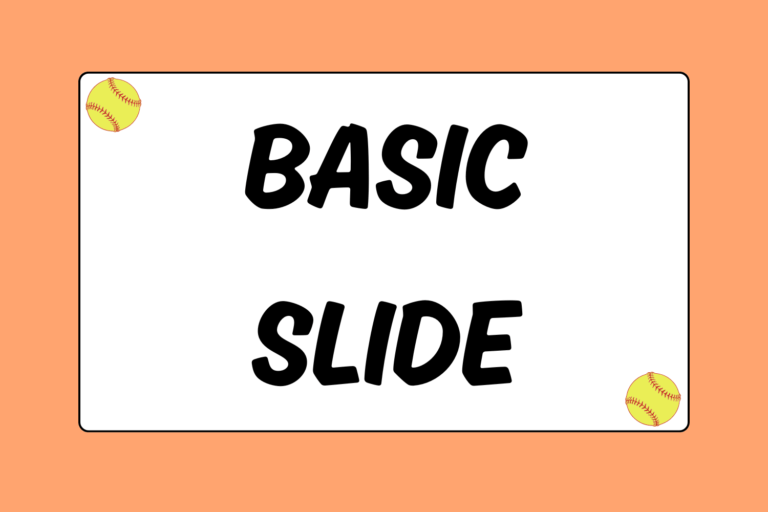Your sophomore and junior years in high school are an exciting milestone in your softball career. This is the time you should start showing interest in colleges across the nation.
According to ASA rules, a coach cannot physically approach you until July 1st, after your junior year in high school, but they can start speaking to you via written correspondence starting September 1st of your junior year. This means it’s time to start your homework!
Your college search must be active. Sure, scouts notice players at exposure tournaments, but you want your name in their head before those types of tournaments. You want recruiters to look for you, not stumble upon you as you’re playing.
A letter of interest is your first impression. You’ll hardly get a second chance to evoke interest in college coaches so you need to sell yourself. Think of it like this: If you aren’t your biggest fan, why should they be?
This guide will give you some helpful tips to producing the best letter of interest, one that will help you to stand out and speak out to the coaches you want to listen.
Finding a College
If you want to play collegiate softball, there is a school for you. But you may need to roll up your sleeves and do some work before finding it. The very first thing you need to have on hand is a college guide. Give yourself weekly assignments of finding at least 5-10 colleges that interest you.
Choosing schools is a process. You definitely do not want to be too selective, so make sure to widen your scope of interest. You’ll want to start with your first-choice schools and go from there:
- First choice: Find the schools you’ve always dreamt of attending. Even if it’s a reach, there is no harm in trying!
- Second choice: Decide on a division of play in which you can honestly compete and the location where you’d like to attend college. Locate schools that fit your criteria.
- Third choice: Venture further. In the same division of play, locate schools in areas you might like to attend college.
- Fourth choice: Keep Going! Sticking to the same division of play, find some schools in locations that you would possibly give a chance.
- Fifth choice: Repeat all of these searches for every other division of play.
This process gives you one valuable thing — options. It will be a lot easier to play collegiate softball if you have numerous options from which to choose.
The Letter
There are two ways to show interest in a college. You can email the college coach and fill out a prospective player profile on the team’s website, or you can send an actual letter. In today’s world, everything is electronic, so that might be the way to go.
However, snail-mail letters are quite out of the ordinary these days. Even though each letter should be typed, a letter sent in the mail may stand out as a relief to coaches who sit in front of computers all day.
The Hook
A coach can do two things with your letter. A coach can be hooked and continue reading it, interested in you as a prospective player (this is what you want!). Or, a coach can get bored, having read similar letters a thousand times, and toss you into the abyss (this is definitely not what you want).
Always ask yourself one thing when you are writing: What would make you want to read your letter? The answer is liveliness! Try not to write in a monotonous tone. For example, what sounds better?
- “My name is ____. I have a 4.0 GPA and my time to first base is 2.6 seconds.”
- “My name is ____. I play for (team) and I go to (high school).”
The first opening is far more likely to hook a coach. Of course not every athlete has a 4.0 GPA, but this type of introduction does wonders, so make sure to point out some stellar skills you have to offer!
The Body
The body of the letter is where you really want to sell yourself as a prospective player. Remember, these coaches read hundreds of letters every year so make yours memorable. You should list your positions and your hitting strengths. Are you an infielder? Middle infielder? Outfielder? Utility Player? Catcher? Power hitter? Slapper? They need to know exactly what type of player you are, so market your talents accordingly.
Coaches are looking for players who can perform in the classroom as well as on the field. In high school, make sure your teachers and counselors know your name.
Check in with your counselors on a regular basis to ensure that you’re taking the correct classes, and keep your GPA up! Consult a tutor if necessary; in college, most teams have assigned tutors, so never be embarrassed to ask for help.
The next thing you want to do is describe what you can contribute to their team. Coaches love reading that a player is coachable. No coach wants a prima donna or an egomaniac, so make sure to include something along the lines of: “I play (position), but I’m willing to contribute by playing any position the team needs.”
A coach needs to know that you aren’t already assuming you’re going to play the position you want. Their team is already comprised of veteran players. You might be able to take someone’s spot after trying out and proving yourself, but don’t assume it in the letter.
Conveying that you are a coachable athlete allows you to market yourself to a wider audience. For example, if you say that you are only a second baseman, it may give the coach the idea that you are only willing to play second base. This will essentially cause every team who already has a second baseman to lose interest in you.
Lastly, personalize each letter to make each coach feel special. Mention their colors, some school accolades, etc. Show the coach you’ve done some research on the team. What you don’t want to do is make coaches feel like they’re reading a generic letter that you’ve sent to hundreds of colleges.
Mental Edge
In college you will be a student-athlete. Your athletic abilities will put your foot in the door, but it’s your academic performance — your grades and test scores — that will push you through to admissions. So before you get too preoccupied deciding whose colors you’d like to wear, remember that first and foremost, you are going to college for an education.
Lastly, study for those SATs and ACTs. These are very important tests for college admissions. Take them multiple times if necessary, so that you give yourself the best chance to get into the schools of your choice.
Invite Further Correspondence
The last thing you want to accomplish in your letter is an invitation of correspondence. Rules prevent coaches from approaching you until July 1st of your junior year in high school, but they can start writing to you on September 1st of your junior year. Take full advantage of this!
The last few sentences of your letter should tell them that you are looking forward to seeing them at your games and hearing from them about the opportunity to wear their colors.
Your Signature
Always personalize your letter by including a handwritten signature. To add a little more flair, include a sentence at the bottom of your letter, quickly thanking them for taking the time to read the letter and convey your excitement in hearing from them. Just don’t be sloppy!
What to Include with Your Letter
There are a few things that should be included with your letter. The first is a copy of your current schedule. Giving a coach your schedule is an invitation to your games. This way, they know exactly when you’ll be playing so they can include watching you in their itinerary.
The second item is an official skills video or DVD. A skills video gives your letter life. In your video, make sure you demonstrate all of your abilities. You should include pitching (if applicable), hitting, base running, throwing, infield defense, and outfield defense because remember, you are willing to play anywhere. What coaches do not want to see are montages of trophies and medals. You should also try to add background music for some pizzazz!
The third (optional) thing to include is a player program. If your team’s program includes something spectacular about you, go ahead and include it. If it doesn’t, there is really no need to send it, since your basic information will be in the body of your letter.
Good Luck!
The deadlines set by ASA for July 1st and September 1st are crucial to follow. Most of your letters should be mailed out in September at the very latest. There is nothing wrong with expressing interest as early as your sophomore year since coaches often have prospective players already in mind.
If you want to play college softball, there is a school out there for you. It may take a little work, but you will eventually find the school of your dreams!





